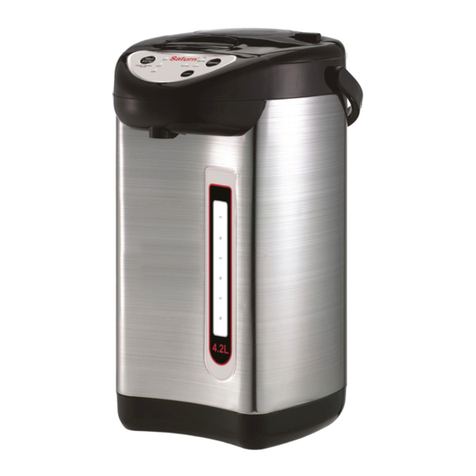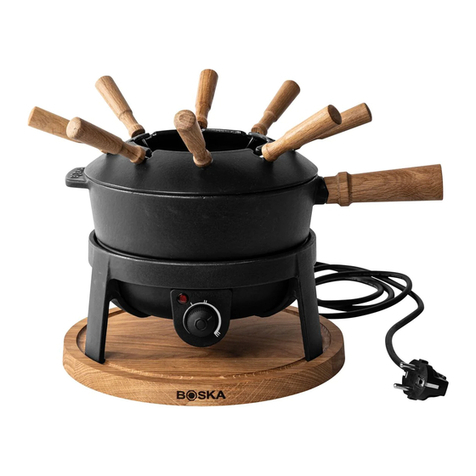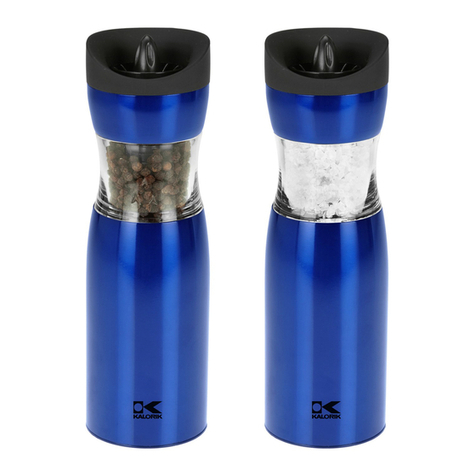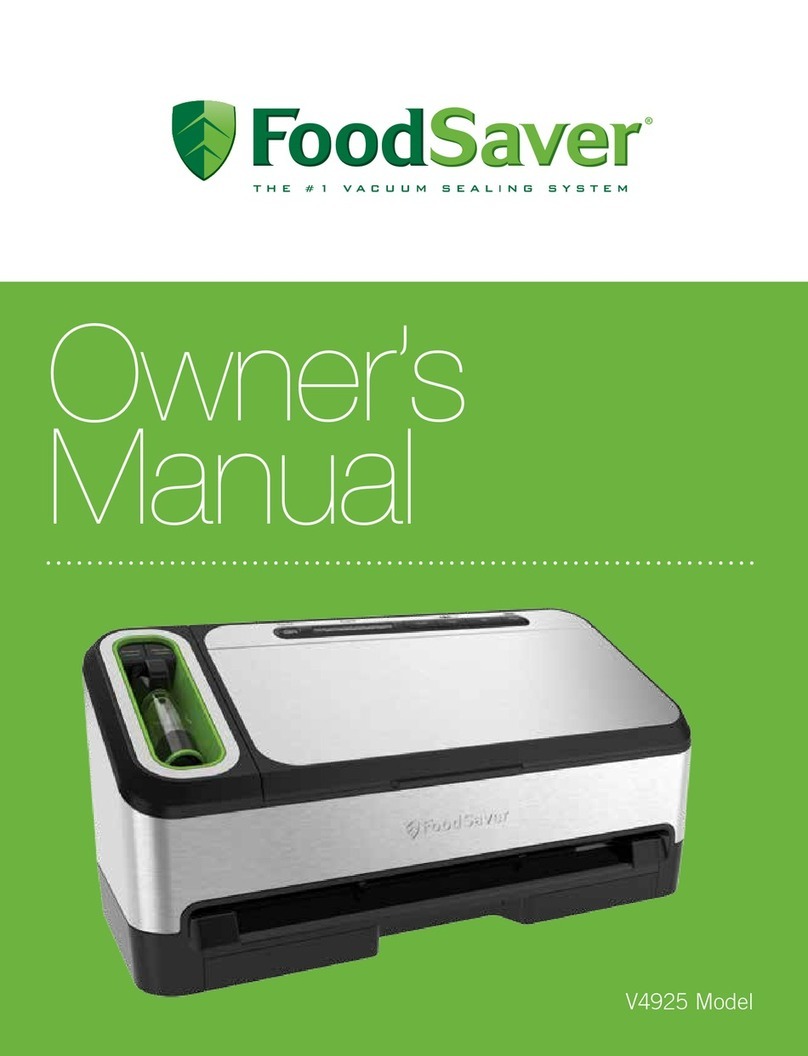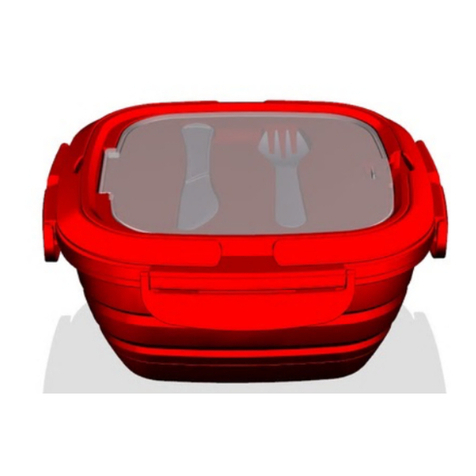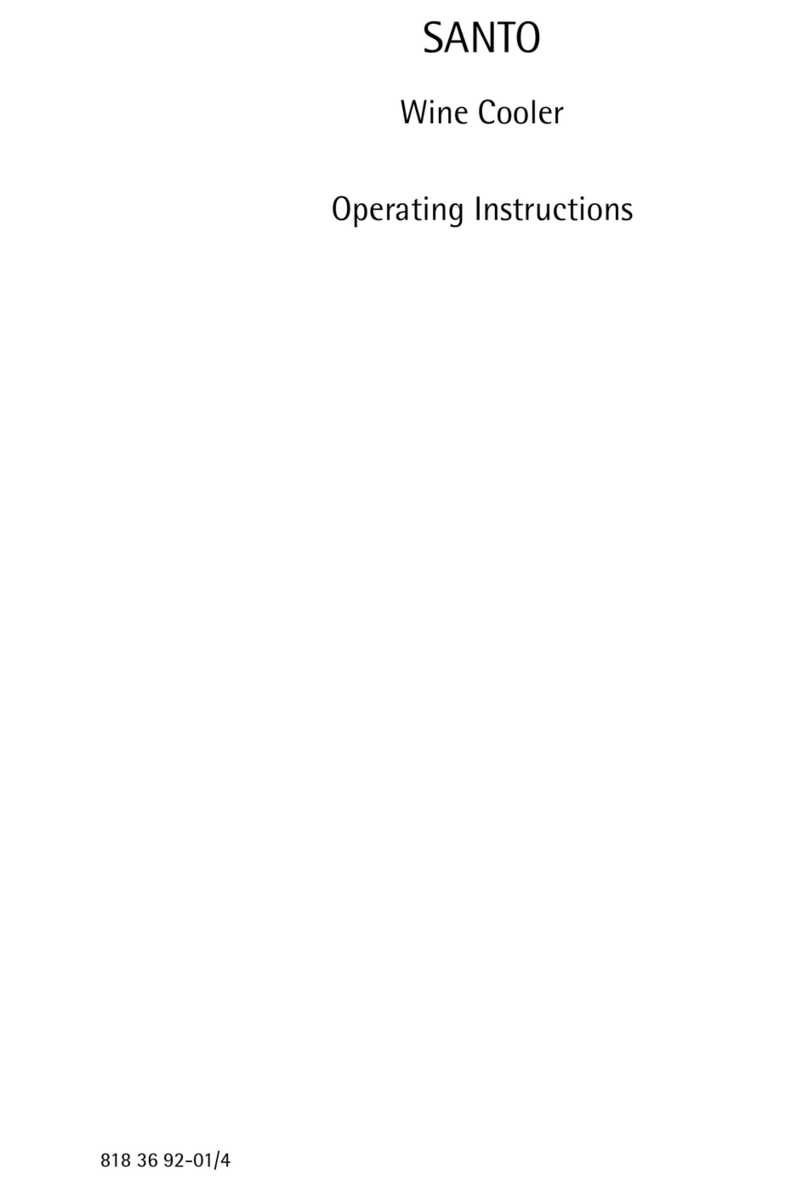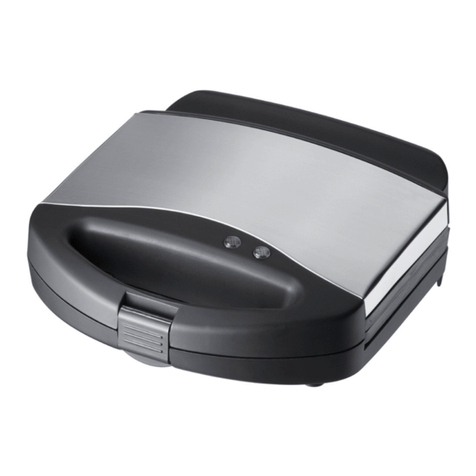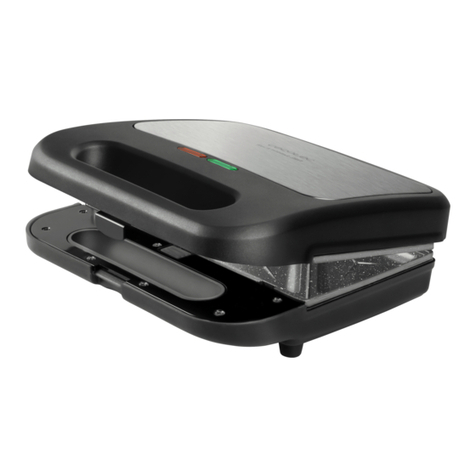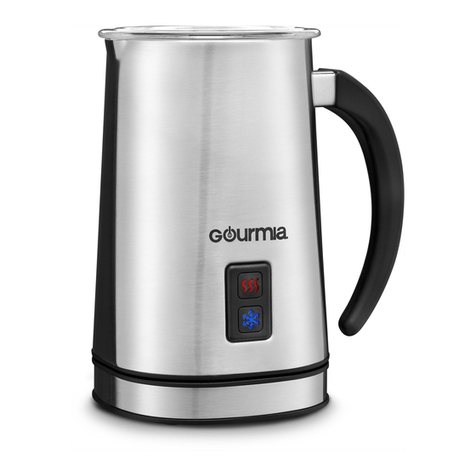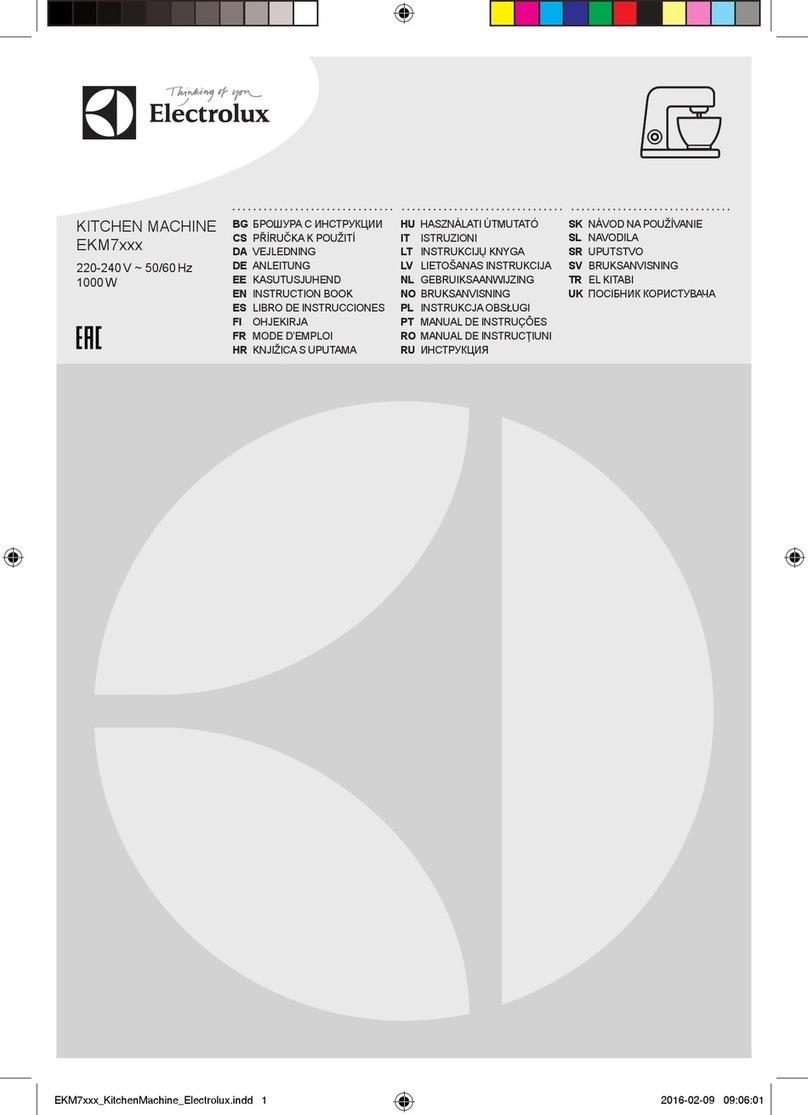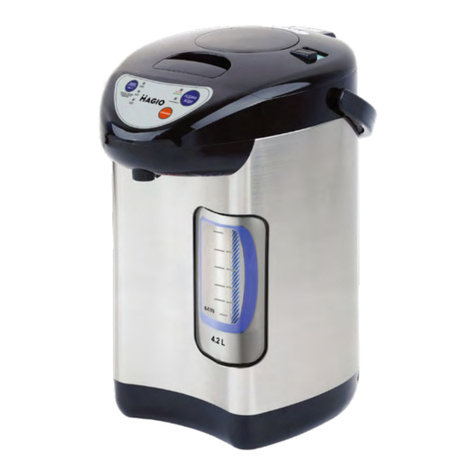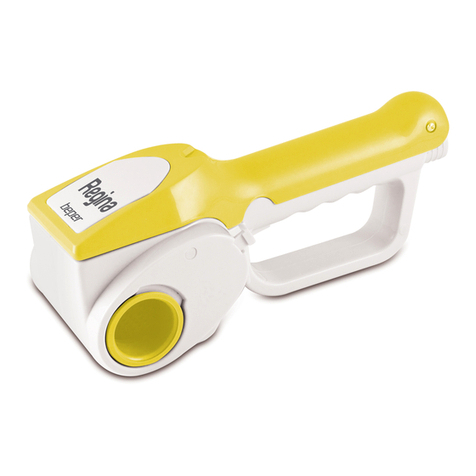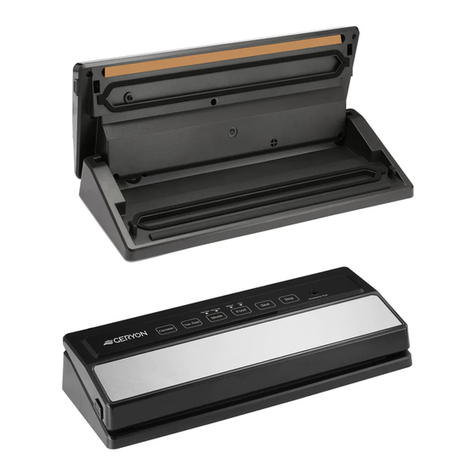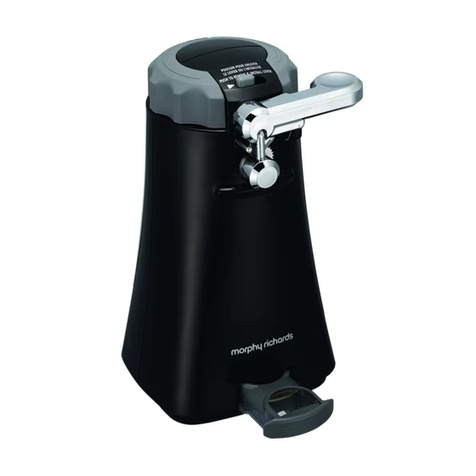Henkelman Marlin User manual

Vacuum Packaging Machine
Marlin, Falcon, Polar
User Manual
Art No. 0895011
Original Instructions for Use
©Henkelman 2017

• The machine is not suitable for the packaging of toxic, corrosive, irritant or potentially
explosive materials.
• All persons responsible for the operation of this machine must at least fully read and
understand the chapters about the operation and safety provided in these operating
instructions.
• All persons responsible for the assembly, installation, maintenance and/or repairs must
fully read and understand these operating instructions.
• The user is at all times responsible for the interpretation and use of this manual.
Contact the owner or the manager in case of questions or doubts about the correct
interpretation.
• This manual should be kept near the machine and should be within reach for its users.
• All major maintenance work, modifications to the machine and observations must be
kept in a logbook; see Logbook on page 72.
• Modifications to the installation/machine are not allowed without the prior written
consent of the supplier.
• For specific maintenance work not included in this manual, please contact the supplier.
• Comply with the safety requirements as set out in Safety on page 8 at all times.
• The correct operation and safety of the system can only be guaranteed if the
recommended maintenance is performed on time and properly.
• Illustrations shown may differ from your machine.
Copyright ©Henkelman BV 2017
Henkelman BV reserves the right to change specifications and/or spare parts without prior notice.
The content of this user manual may also be changed without prior notice.
For information about settings, maintenance and repairs not provided for in this user manual, please contact the technical department of your supplier.
Henkelman BV accepts no liability for damage and/or problems arising from the use of spare parts not supplied by Henkelman BV.
This user manual has been compiled with all possible care. Henkelman BV assumes no responsibility for any errors in this manual and/or the
consequences of an erroneous interpretation of the instructions.
All rights reserved. No part of this publication may be reproduced, stored in computerised databases, or made public, in any form or by any means,
either electronic, mechanical, through photocopying, recording or otherwise, without the prior written consent of Henkelman BV. This also applies to the
associated drawings and diagrams.

Contents 3
Contents
List of Figures................................................................................................................................. 6
1 Preamble....................................................................................................................................... 7
2 Safety.............................................................................................................................................8
2.1 List of the Symbols Used in this Manual............................................................................... 8
2.2 Pictograms on the Machine................................................................................................... 8
2.3 General Warnings.................................................................................................................. 9
2.4 Warnings During Use...........................................................................................................10
2.5 Warnings for Operating Personnel.......................................................................................10
3 Introduction.................................................................................................................................12
4 Description of the Machine.......................................................................................................13
4.1 Overview of the Main Components......................................................................................13
4.2 Description of the Packaging Process/Machine Functions.................................................. 14
4.2.1 Packaging Process/Machine Functions........................................................................14
4.2.2 General Functions........................................................................................................ 18
4.3 Sealing System.................................................................................................................... 19
4.4 Vacuum Pump......................................................................................................................20
4.5 Electrical Installation.............................................................................................................20
5 Installation...................................................................................................................................23
5.1 Transportation and Installation............................................................................................. 23
5.2 Connecting the Machine...................................................................................................... 23
5.3 Prior to the First Use........................................................................................................... 24
6 Operation.....................................................................................................................................25
6.1 Operating Elements of the 10-Program Control System......................................................25
6.2 Operating Elements of the Advanced Control System (ACS).............................................. 26
6.2.1 Changing the ACS Settings......................................................................................... 27
6.2.2 Importing/Exporting Data..............................................................................................30
6.2.3 Data Log ID..................................................................................................................30
6.2.3.1 Setting and Using the Data Log ID......................................................................30
6.2.3.2 Exporting Data Log.............................................................................................. 31
6.3 Starting the Machine............................................................................................................32
6.4 Starting the Packaging Cycle...............................................................................................32
6.5 Proceeding to the Next Step in the Cycle........................................................................... 32
6.6 Terminating a Program.........................................................................................................33
6.7 Changing the Program Settings...........................................................................................33
6.7.1 10-Program Control System.........................................................................................33
6.7.1.1 Vacuum.................................................................................................................33
6.7.1.2 Vacuum+ (optional)...............................................................................................34
6.7.1.3 Gas (optional).......................................................................................................34

Contents 4
6.7.1.4 Gas+ (optional).....................................................................................................35
6.7.1.5 Liquid Control (optional)....................................................................................... 35
6.7.1.6 Liquid Control+ (optional)..................................................................................... 35
6.7.1.7 Red Meat (optional)..............................................................................................36
6.7.1.8 Multi-Cycle Vacuum (optional)..............................................................................36
6.7.1.9 Seal.......................................................................................................................36
6.7.1.10 Soft-Air (optional for the Falcon)........................................................................ 37
6.7.1.11 External Vacuum (optional)................................................................................ 37
6.7.1.12 Sleeper Option....................................................................................................38
6.7.2 Advanced Control System (ACS).................................................................................38
6.7.2.1 Programming the ACS Control Using the PC...................................................... 39
6.7.2.2 Functions.............................................................................................................. 40
6.7.2.3 Vacuum.................................................................................................................40
6.7.2.4 Vacuum+ (optional)...............................................................................................40
6.7.2.5 Gas (optional).......................................................................................................41
6.7.2.6 Gas+ (optional).....................................................................................................41
6.7.2.7 Liquid Control (optional)....................................................................................... 42
6.7.2.8 Liquid Control+ (optional)..................................................................................... 42
6.7.2.9 Red Meat (optional)..............................................................................................42
6.7.2.10 Sequential Vacuum (optional).............................................................................43
6.7.2.11 Marinating (optional)...........................................................................................43
6.7.2.12 Tenderising (optional)......................................................................................... 44
6.7.2.13 Seal.....................................................................................................................44
6.7.2.14 Soft-Air (optional for the Falcon)........................................................................ 45
6.7.2.15 External Vacuum (optional)................................................................................ 45
6.7.2.16 Sleeper Option....................................................................................................46
6.7.2.17 Dealer Information.............................................................................................. 46
6.8 Guideline for Function Values.............................................................................................. 46
6.9 Printer (ACS only)................................................................................................................ 49
6.9.1 Connecting a Printer.................................................................................................... 49
6.9.2 Creating a Label...........................................................................................................49
7 Maintenance................................................................................................................................51
7.1 Maintenance Schedule.........................................................................................................51
7.2 Cleaning the Machine.......................................................................................................... 52
7.3 Running the Pump Cleaning Program.................................................................................52
7.4 Removing Oil, Replacing Oil Filter, Refilling Oil...................................................................52
7.5 Replacing the Oil Exhaust Filter.......................................................................................... 53
7.5.1 Pump 40-300 m3.......................................................................................................... 54
7.6 Replacing the Sealing Wire................................................................................................. 54
7.7 Replacing the Silicone Rubber of the Silicone Holders....................................................... 56
7.8 Replacing the Lid Gasket.....................................................................................................57
7.9 Inspecting the Lid Springs................................................................................................... 57
8 Troubleshooting......................................................................................................................... 59
9 Terms of Warranty.....................................................................................................................61
9.1 Liability..................................................................................................................................61

Contents 5
10 Disposal.....................................................................................................................................62
11 Appendices............................................................................................................................... 63
11.1 Technical Data....................................................................................................................63
11.1.1 Technical Data Marlin.................................................................................................63
11.1.2 Technical Data Falcon................................................................................................ 64
11.1.3 Technical Data Polar.................................................................................................. 66
11.2 Example Programs.............................................................................................................70
11.3 Logbook..............................................................................................................................72
11.4 EC Declaration of Conformity............................................................................................ 74
11.5 Replacing a Printer Roll.....................................................................................................75
11.6 Aligning the Printer.............................................................................................................76

List of Figures 6
List of Figures
Figure 1: Overview of the Main Components................................................................................. 13
Figure 2: Overview of the Sealing System (Including Sealing Cylinder).........................................19
Figure 3: Overview of the Sealing System (Including Seal Bag)....................................................19
Figure 4: Overview of the Pump.....................................................................................................20
Figure 5: Overview of the Electrical Installation..............................................................................21
Figure 6: Direction of Rotation of the Vacuum Pump..................................................................... 24
Figure 7: Control Panel of the 10-Program Control System........................................................... 25
Figure 8: Control Panel of the Advanced Control System (ACS)....................................................26
Figure 9: Possible Display Modes...................................................................................................27
Figure 10: Possible Display Modes.................................................................................................27
Figure 11: Overview of the Menus..................................................................................................29
Figure 12: Example of an Exported Data Log................................................................................31
Figure 13: External Vacuum Adapter Set (10-Program Control System)........................................38
Figure 14: Screenshot of the navigation mode and the operating buttons of the ACS....................39
Figure 15: External Vacuum Adapter Set (ACS)............................................................................ 45
Figure 16: Vapour Pressure Curve of Water.................................................................................. 49
Figure 17: Replacing the Oil Exhaust Filter (Pump 40-300 m3).....................................................54
Figure 18: Removing the Sealing Bar (Plastic Lid).........................................................................55
Figure 19: Removing the Sealing Bar (Metal Lid).......................................................................... 55
Figure 20: Replacing the Sealing Wire...........................................................................................55
Figure 21: Replacing the Silicone Rubber of the Silicone Holders................................................. 56
Figure 22: Replacing the Lid Gasket.............................................................................................. 57
Figure 23: Replacing the Printer Roll............................................................................................. 75
Figure 24: Aligning the Printer........................................................................................................ 76
Figure 25: Printing the First Label.................................................................................................. 76

Preamble 7
1 Preamble
This is the manual for your Henkelman vacuum packaging machine. This manual is intended for
anyone who works with or services the machine.
This manual contains information and instructions for installation, operation and maintenance
of the machine. We recommend that you carefully read this manual before use and follow the
procedures and instructions strictly. This will ensure that you get the best out of the machine and
prevents possible accidents and serious injury.

Safety 8
2 Safety
Your vacuum packaging machine has been carefully designed and expertly built to be operated
safely. This is corroborated by the EC Declaration of Conformity. However, there are always
dangers and safety risks that cannot be eliminated. These dangers and risks are the result of the
use functions of the machine and operation of the machine by the user. This section discusses
safety instructions and precautions, how they will be pointed out to you and the requirements
the user must meet. It is essential that you are well aware of these safety instructions and
requirements and observe them at all times!
2.1 List of the Symbols Used in this Manual
For all operations in which the safety of the operator and/or technician is at stake and where
caution should be exercised, the following symbols are used.
This symbol provides insight or offers tips to help facilitate certain actions.
This symbol warns for dangerous situations that may lead to damage to the machine or
personal injury.
This symbol warns for high voltage.
2.2 Pictograms on the Machine
Pictograms and warnings have been fitted on the machine to warn users of the possible risks.
Warning sign "High Voltage"
• Is located on the back of the machine
Warning sign "Heat"
• Is located on the sealing bars and on the vacuum pump

Safety 9
Warning sign "Gas Connection" (optional)
Forbidden to connect oxygen
• Is located on the back of the machine
Warning sign "Gas Connection" (optional)
Maximum allowed gas pressure of the gas flush system
• Is located on the back of the machine
Warning sign "Seal Pressure Connector" (optional)
Maximum allowed gas pressure of the gas flush system
• Is located on the back of the machine
Machine plate
• Is located on the back of the machine
Regularly check whether the pictograms and markings are still clearly recognisable and
legible. Replace them if this is not the case.
2.3 General Warnings
• All persons responsible for the operation of this machine must at least fully read and
understand the chapters Safety on page 8 and Operation on page 25.
• Failure to follow or disregard of the safety instructions may result in serious injury.
• Never pack products that can be damaged by vacuum.
• Never vacuum live animals.
• Warranty and/or liability is void if any damage is caused by repairs and/or modifications
that are not authorised by the supplier or any of its distributors.
• In case of malfunction, contact the supplier.
• High pressure cleaning is not allowed. This may cause damage to the electronics and
other components.
• Prevent water from entering the ventilation inlet of the chamber or the exhaust of the
pump. This causes irreversible damage to the pump.
• The work space around the machine must be safe. The owner of the machine must take
the necessary precautions to operate the machine safely.
• It is forbidden to start the machine in an explosive environment.

Safety 10
• The machine has been designed in such a way that production is safe under normal
ambient conditions.
• The owner of the machine must ensure that the instructions in this manual are actually
complied with.
• The available safety devices may not be removed.
• The correct operation and safety of the system can only be guaranteed if the
recommended maintenance is performed on time and properly.
• If work must be carried out on the machine, it must be disconnected and blocked from
the power supply and, if applicable, from the air and gas supply.
• Only a technical expert may perform work on the electrical installation.
• Internal procedures and monitoring must be in place to ensure that all relevant power
supplies are disconnected.
• The machine may not be used during cleaning, inspection, repair or maintenance and
must be disconnected from the power supply by disconnecting the plug and/or using the
main switch.
• Never perform welding work on the machine without first disconnecting the cable
connection to the electrical components.
• Never use the power supply of the control unit to connect other machines.
• All electrical connections must be connected to the terminal strips according to the
wiring diagram.
2.4 Warnings During Use
• Before starting the machine, make sure no work is being performed on the installation
and that the machine is ready for use.
• The machine may not be operated by unauthorised persons. This should be monitored
by the machine operator(s).
• Immediately contact the service technician of your technical department or dealer if
something does not seem right, such as unusual vibrations or unusual noise.
• Components of the sealing system can become very hot. Contact with these
components may cause injuries.
2.5 Warnings for Operating Personnel
• Operating personnel must be 18 years or older.
• Only authorised persons are allowed to perform work on or with the machine.
• Personnel may only perform work for which it was trained. This applies to both
maintenance and normal use.
• The machine may only be operated by trained personnel.
• Operating personnel must be familiar with all circumstances, so quick and effective
action can be taken in case of an emergency.

Safety 11
• If an operator notices errors or risks or disagrees with safety measures, he or she
should report this to the owner or manager.
• Safety shoes are mandatory.
• Appropriate work clothing is mandatory.
• All personnel must obey the safety regulations to avoid danger to themselves and
others. Always strictly follow the work instructions.

Introduction 12
3 Introduction
Henkelman BV is a supplier of ultra-modern vacuum packaging machines. Our machines are
developed and manufactured to meet the highest standards. They combine a sleekly built and
functional design with optimal ease of use and a long service life. After mounting the plug, it is just
a matter of "plug & pack". The clever design ensures compliance with the hygiene standards at all
times.
The Marlin, Falcon and Polar series are floor models with various options suitable for a variety of
applications. These machines have several programs and options for optimal packaging.

Description of the Machine 13
4 Description of the Machine
This section provides an overview of the main components and functions. If detailed information is
available in this manual, you will be referred to the specific sections.
4.1 Overview of the Main Components
The figure below shows the main components of the system. The model shown may differ from
your machine.
Figure 1: Overview of the Main Components
1. Lid
The lid closes the vacuum chamber during the application of the vacuum. A rubber is mounted
in the lid to ensure proper closing. On machines with two vacuum chambers, the lid can be
moved from position 1 to position 2 manually. In these machines, the sealing bars and suction
inlet for the vacuum are included in the lid.
2. Vacuum chamber
The products to be packaged are placed on the work surface with the openings of the vacuum
bags on the sealing position. On machines with two vacuum chambers, the already packaged
product can be removed and new products can be placed on the free work surface during the
vacuuming and sealing process.
3. Castor with brake
The machines are fitted with four castors with brake. This allows for easy moving of the
machine to a different location.
4. Machine housing
The machine housing contains all the components necessary for the functioning of the
machine.

Description of the Machine 14
5. Control panel
This serves to operate the available control functions. Depending on your model, your
machine will have the 10-program control system or the Advanced Control System (ACS).
6. Seal system
Depending on the model, one, two or three sealing bars are mounted in the vacuum chamber.
These close the vacuum bag.
7. Vacuum pump
The vacuum pump creates the vacuum.
8. Power connection and cable
This serves to connect the machine to the power supply. The machine is supplied without an
electrical plug.
9. Gas flush system connector (optional)
After applying vacuum, a gas is injected into the packaging to create a modified atmosphere to
protect the shape of the product or increase the shelf life of the product.
10. Seal pressure connector (optional)
Where the standard model makes use of atmospheric pressure to press the seal bar onto the
vacuum bag during the sealing process, it is also possible (optional) to connect to an external
source in order to obtain a higher sealing pressure.
4.2 Description of the Packaging Process/Machine Functions
This section provides an overview of the packaging process and available machine functions.
For the functions Liquid Control (and Liquid Control+), Gas (and Gas+), Seal 1-2 Cut-off
and Soft-air, specific components must be installed on your machine before they can be
enabled. Contact your supplier for more details.
See Changing the Program Settings on page 33 for information about setting the
parameters to the correct values.
4.2.1 Packaging Process/Machine Functions
This section describes the packaging process and the machine functions. See Operation on page
25 for the realization of the specific steps of the procedure.
Step Process phase Operation
1. Preparation The operator puts the product in a vacuum bag and places it
on the work surface with the opening on the sealing position.
2. Applying vacuum The vacuum process is initiated by closing the lid.
Depending on the options you selected for your machine and
the product you are packaging, the following functions are
available:

Description of the Machine 15
Step Process phase Operation
Vacuum
During the cycle, the air is removed from the chamber until
the set time or pressure has been reached, depending on
the selected model.
Applying vacuum until a set value is reached is only possible
if your machine is sensor-controlled (optional for 10-program
control system). This value can be set in %. The percentage
indicates the depth of the vacuum. This is in relation to an
outside atmosphere of 0%. In case of the Advanced Control
System (ACS), the value is indicated in percentages, mbar or
hPa.
Vacuum+
Vacuum+ is only available if the vacuum percentage is set to
the maximum.
The Vacuum+ option continues the vacuum process for an
additional time to allow any entrapped air to escape from the
product.
The Vacuum+ option is only available on sensor-controlled
machines.
Gas (optional)
After applying vacuum, a gas is injected into the package
to create a modified atmosphere to protect the shape of the
product or to increase the shelf life of the product. The value
of the gas function can be set in %, mbar or hPa or time,
depending on the control type of the machine.
Gas+ (optional)
The Gas+ option continues injecting gas during the closing
of the bars to increase the amount of gas in the package.
See Gas+ (optional) on page 35.
Liquid Control
(optional)
Liquid Control is only available if your machine is equipped
with the optional Liquid Control sensor.
With the Liquid Control option, the system is controlled by
a highly sensitive sensor. The sensor is able to detect the
moment that liquids from the product or the product itself
begin to evaporate (boil). At that time the system will proceed
to the next step in the process. This will prevent the product
from dehydrating, losing weight and/or the vacuum bag from

Description of the Machine 16
Step Process phase Operation
bursting, thus contaminating the seal, the chamber, and the
oil in the pump. See Liquid Control (optional) on page 35.
Liquid Control+
(optional)
Liquid Control+ is only available if your machine is equipped
with the Liquid Control option.
The Liquid Control+ function allows you to continue the
vacuum process for a certain time after the evaporation point
has been reached.
Red meat (optional)
This option is especially designed for the packaging of fresh
meat. It is added to the normal vacuum function to prevent
degassing of the product during and after the sealing phase.
This degassing could create air pockets inside the package.
See Red Meat (optional) on page 36.
Sequential Vacuum
(optional)
This function is only available on machines with the
Advanced Control System (ACS).
With sequential vacuum, you can alternate vacuum and
pause steps to allow air trapped inside a product to escape
from the core. A maximum of 5 steps can be programmed.
Multi-Cycle Vacuum
(optional)
This function is only available on machines with a 10-
program control system. See 10-Program Control System on
page 33.
The Multi-Cycle Vacuum option allows you to vacuum and
insert gas in steps. This provides an additional reduction in
the oxygen content.
Marinating (optional)
This function is only available on machines with the
Advanced Control System (ACS).
This function is especially designed to accelerate the
marinating of a product. This program allows definition of up
to 5 vacuuming steps with intermediate ventilation steps.
The vacuuming steps have a fixed vacuum value of 80%,
except for the last step. The last vacuuming step has an
adjustable value of up to 99.8%. This also allows setting

Description of the Machine 17
Step Process phase Operation
Vacuum+. The intermediate ventilation steps have a fixed
value of 40%. After the last step, sealing takes place.
Liquid Control: It is also possible to enable Liquid Control.
This function will then only be active during the last
vacuuming step. If, for instance, 3 vacuuming steps have
been defined, Liquid Control will be active during the third
step. Vacuum+ is also possible here; however, this would be
a Liquid Control+ setting of 0.1 sec with a maximum of 5.0
sec.
Tenderising
(optional)
This function is only available on machines with the
Advanced Control System (ACS).
This feature has been designed to keep the chamber at a
pre-determined vacuum level for a certain time. This is done
to tenderise or degas the product.
During the cycle, the air is removed from the chamber until
the pre-set value has been reached. Once this value has
been reached, the chamber will remain at this vacuum level
for the pre-set time.
Sealing The sealing bars are pressed against the vacuum bag and
melt the bag closed.
3.
Seal
During the sealing process, the material of the vacuum bag
is heated and pressed together to create a hermetic seal.
The programming of this function takes place in seconds.
Optionally, a cut-off wire is available. The purpose of the
cut-off wire is to remove the excess foil. Depending on the
selected model, the cut-off wire is controlled simultaneously
with or independent from the sealing wire (Seal 1-2 cut-off).
Decompressing The vacuum is removed from the vacuum chamber by letting
air into the chamber.
4.
Soft-Air (optional for
the Falcon)
This function allows air from outside to slowly enter the
chamber so the vacuum bag will shape itself slowly around
the product. This prevents sharp edges of the product from
puncturing the foil and causing leaks.
5. Opening the
vacuum chamber The lid opens.

Description of the Machine 18
Step Process phase Operation
6. Removing the
product The operator can remove the packaged product from the
work surface.
4.2.2 General Functions
Function Pictogram Operation
Cleaning of the
oil pump
The pump cleaning program ensures that the pump is thoroughly
rinsed. During the program, the pump and oil reach the
operating temperature, so the oil and moisture are separated
and any contamination is filtered. The high temperature causes
any moisture in the pump to evaporate, thus minimising the risk
of corrosion.
Menu
This menu is available on machines with ACS control. The menu
is used to change the machine settings, such as language and
print options.
Printing
This function is available on machines with ACS control.
This function allows the creation of one or more labels per cycle,
to be put on the packaging.
The following information can be printed on the label: name of
the producer, name of the product, production date, shelf life,
achieved vacuum, initials of the user, recommended storage
temperature and an information field (for example to indicate the
gas used).
External
Vacuum
This function is available as an option, depending on the type of
machine.
This function allows special food containers to be vacuumed
outside the machine.
The options to set the vacuum value are the same as for
standard vacuuming (see External Vacuum (optional) on page
37 for 10-program control system or External Vacuum
(optional) on page 45 for ACS control).
Sleeper option The Sleeper option shuts down the machine after a certain time.
The default setting is 10 minutes. If you wish to change this time,
please contact your supplier.

Description of the Machine 19
4.3 Sealing System
The sealing system closes the opening(s) of the bag to retain the vacuum and/or gas in the bag.
The end of the bag can optionally be cut off by the sealing bar.
Figure 2: Overview of the Sealing
System (Including Sealing Cylinder)
Figure 3: Overview of the Sealing
System (Including Seal Bag)
1. Sealing bar
The sealing bar consists of the following components:
• Sealing wires: during the sealing process, the sealing wires are heated for a certain time
causing the edges of the vacuum bag to melt together.
• Cut-off wires (optional): A cut-off wire is heated in such a way that the foil of the bag
partially melts, allowing the excess foil of the vacuum bag to be removed easily.
• Teflon tape: sealing and cut-off wires are covered with Teflon tape to prevent the bag from
sticking to the sealing bar.
Consult Replacing the Sealing Wire on page 54 for more detailed information about
maintenance.
2. Silicone holder
Opposite the sealing bar is a silicone holder which provides counterpressure on the cylinders/
seal bag (Replacing the Silicone Rubber of the Silicone Holders on page 56).
3. Sealing mechanism
The sealing bars are pressed onto the vacuum bag by bellows or cylinders.
By connecting the inlet of the bellows or cylinders with the atmospheric pressure outside, they
press the sealing bar onto the bag.
Additional sealing pressure (optional) may, depending on the model you have, be used if
additional pressure force is needed.
See Technical Data on page 63 and Connecting the Machine on page 23 for more
information.

Description of the Machine 20
4.4 Vacuum Pump
The vacuum pump creates the vacuum.
Figure 4: Overview of the Pump
1. Vacuum pump - Creates the vacuum for the process.
2. Oil exhaust filter - Filters the air by capturing oil vapours.
3. Oil sight glass - Indicates the maximum and minimum oil levels of the vacuum pump.
4. Oil drain plug - Removing the oil drain plug allows the oil to be drained.
5. Oil filler plug - Removing the oil filler plug allows the oil to be refilled.
6. Oil filter - Filters the oil.
4.5 Electrical Installation
The electrical installation provides power for the vacuum pump, the seal system and the operation
of the machine.
See the electrical diagram for the further structure and operation of the electrical installation.
Please contact your supplier for the electrical diagram.
Only a technical expert may perform work on the electrical installation.
This manual suits for next models
6
Table of contents
Other Henkelman Kitchen Appliance manuals

Henkelman
Henkelman DT 60 User manual
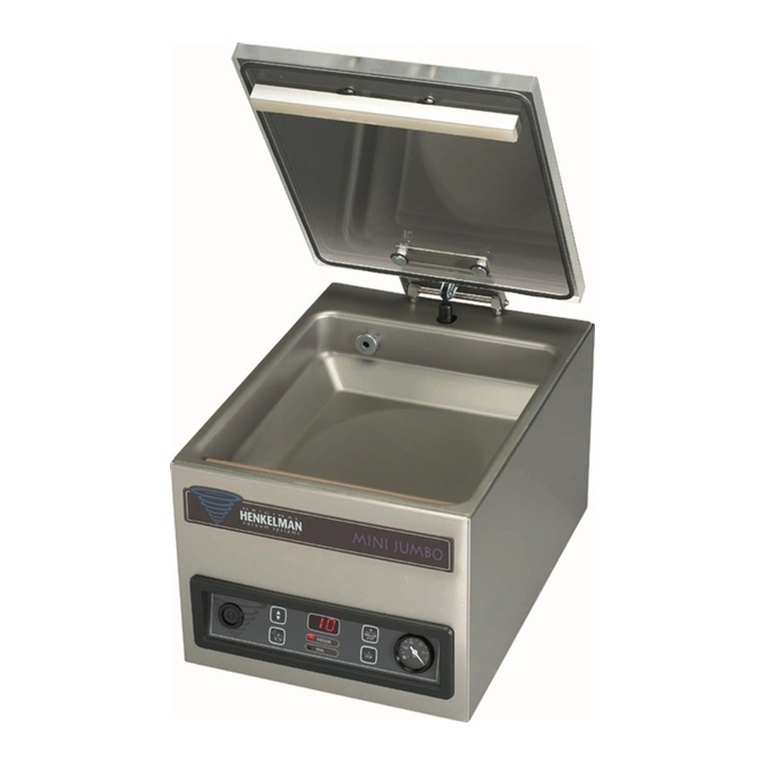
Henkelman
Henkelman Mini Jumbo User manual
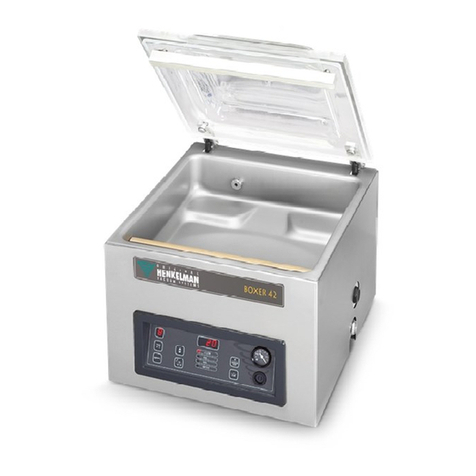
Henkelman
Henkelman Boxer 35 User manual
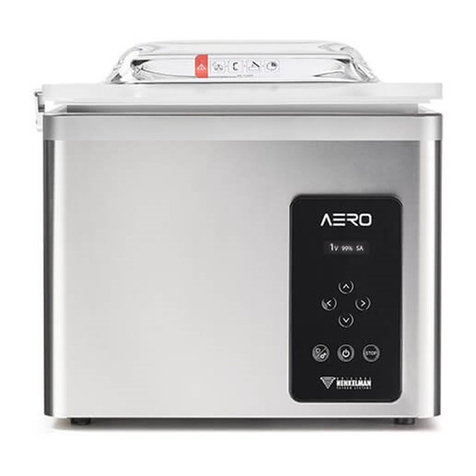
Henkelman
Henkelman Aero User manual
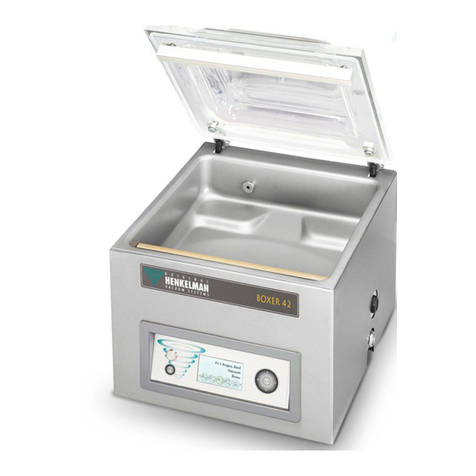
Henkelman
Henkelman Boxer Series User manual
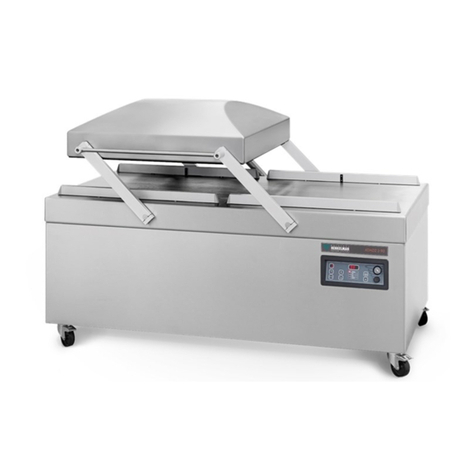
Henkelman
Henkelman Atmoz Series User manual
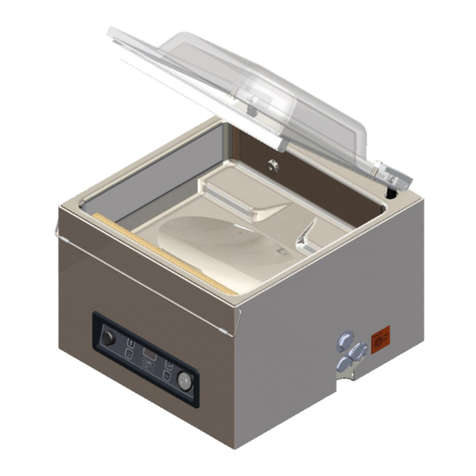
Henkelman
Henkelman Jumbo User manual
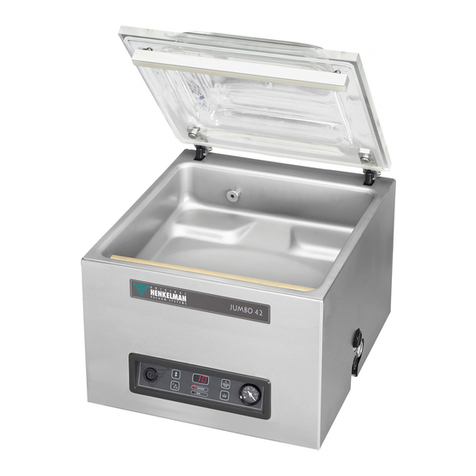
Henkelman
Henkelman Jumbo series User manual

Henkelman
Henkelman Jumbo Installation and operation manual
